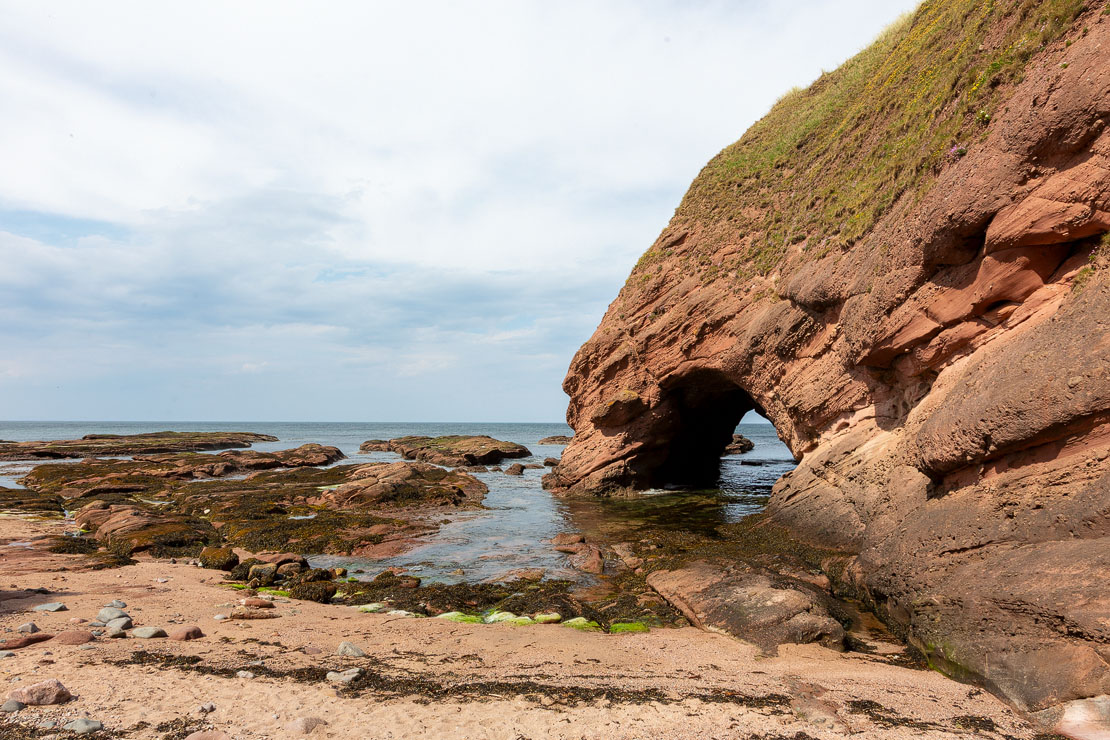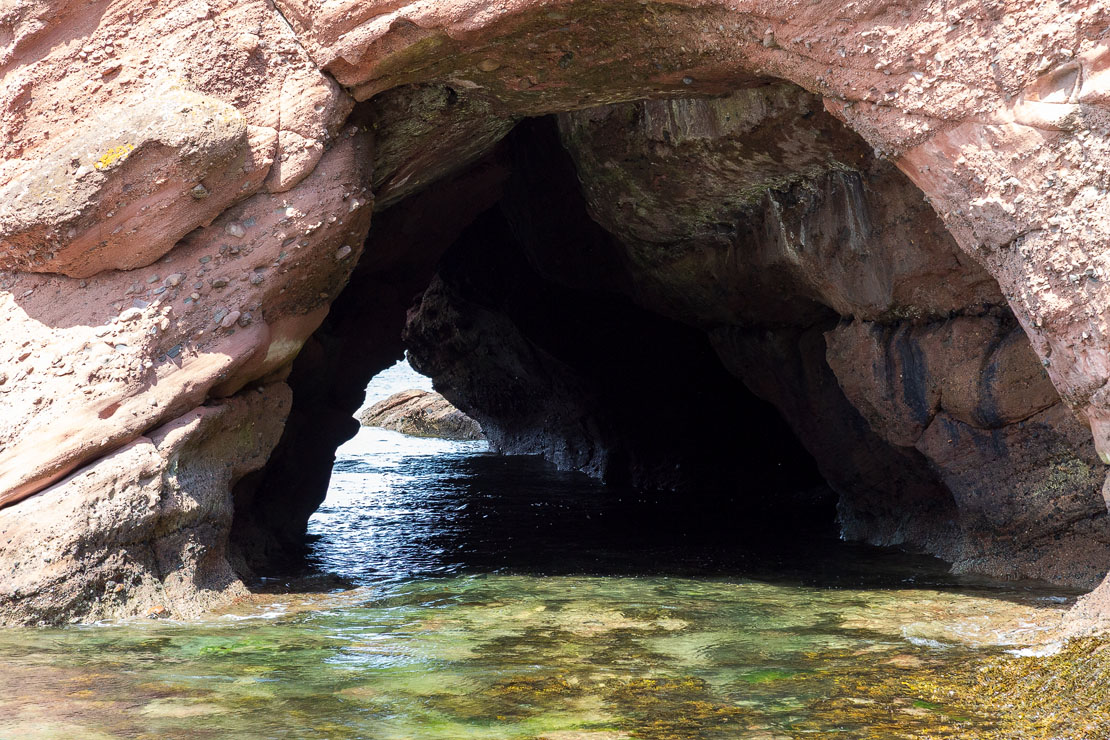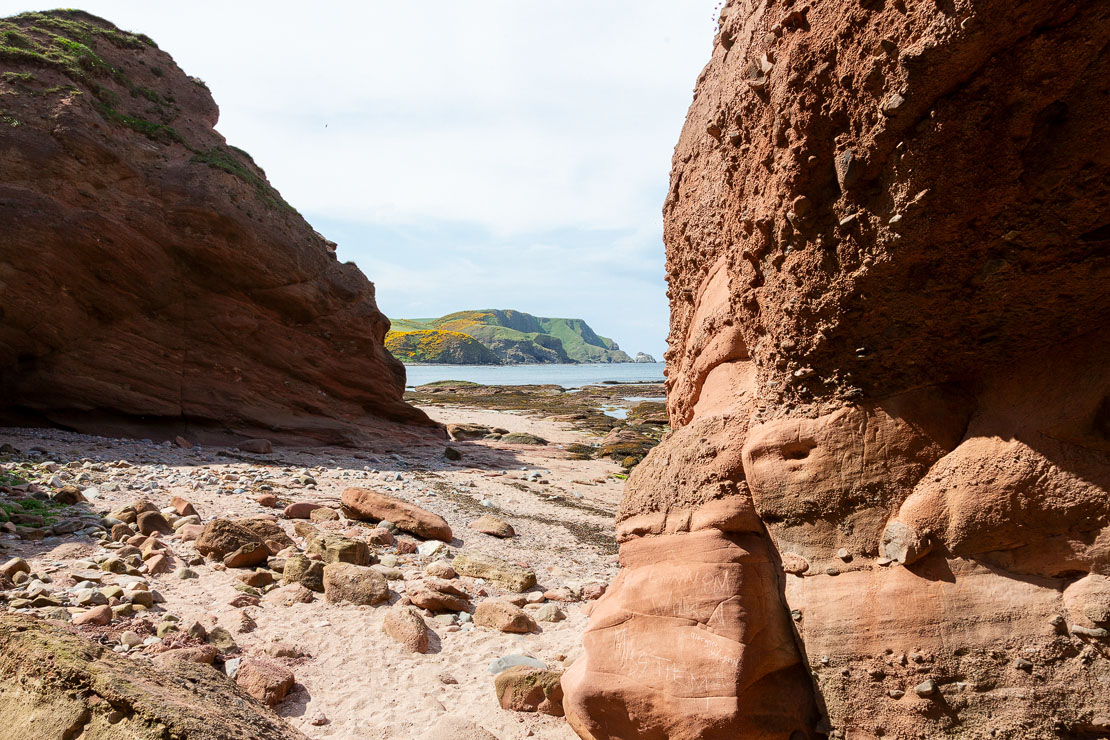New Aberdour Beach

Aberdour Beach sits on the north coast of Aberdeenshire, a short distance west of Pennan and about ten miles east of Macduff. It’s a quiet, shingle and sand bay backed by steep grassy cliffs and farmland, facing out towards the Moray Firth. The beach is accessible by a single-track road that descends steeply from the main route, terminating in a small, informal parking area near the shore.
The bay itself is curved and fairly enclosed, giving it a sheltered feel even on windy days. At low tide, broad areas of sand and exposed rock pools appear, making it a good spot for exploring with children or walking the dog. There are no facilities here - no café, toilets, or lifeguard - so it’s very much a bring-your-own type of place.
The surrounding coastline is typical of this part of Aberdeenshire: rugged, open, and largely untouched, with cliffs, sea caves, and occasional sightings of seals or seabirds offshore. On clear days, you can see across to the Banffshire coast, and the light shifts constantly as clouds move over the water.
Our visit to New Aberdour Beach
My family and I visited Aberdour Beach on a windy spring afternoon in May. The long, meandering road from the B9031 road gave little glimpse of the beach until we arrived at the beach car park.
The car park was surprisingly busy when we arrived, but there is ample space for at least 40-50 cars. Many families were sitting on the grassy verge and picnic tables near the beach.

I knew this beach was famous for its limestone caves and sandstone arches, so we made our way eastwards along the beach.
St. Drostan's Well
Before arriving at the sea caves, we noticed St Drostan's Well to our right from the beach path.
According to tradition, St. Drostan, a follower of St. Columba, lived around the late 6th and early 7th centuries. It’s said he first came ashore at Aberdour Beach before travelling inland to spread Christianity across Buchan, in what were then the lands of the Picts.
Local stories tell that Drostan used the water from this spring to baptise converts and that its waters were later credited with healing powers. The site became known as St Drostan’s Well, or the Sacred Spring, and remained a place of quiet reverence for centuries.
In the mid-19th century, locals built a small wellhead to protect the spring — a white stone structure with a pink granite basin, its cover carved with a scallop shell motif. An inscription still marks the spot: "St Drostan's Well 1884 — Erected by J. Findlater LLD, a native of Aberdour."

Jane Whyte memorial
At the opposite side of the car park stands a small stone monument to Jane Whyte , a local woman remembered for an act of remarkable courage. On 28th October 1884, the schooner William Hope was driven ashore here in a violent storm. Fourteen crewmen were struggling in the surf, their vessel breaking apart in the waves.
Jane Whyte, who lived in a nearby cottage, spotted the wreck and waded into the sea, fighting through the freezing water to throw the ship’s hawser around her body. With that single rope, she gave the sailors a lifeline to reach the shore. All fourteen men survived.
Her bravery earned her the RNLI Silver Medal for Gallantry — one of the few women in Scotland ever to receive it. The memorial overlooking the bay marks the spot where she carried out her rescue, a simple reminder of what quiet courage can look like on an otherwise peaceful stretch of coast.

New Aberdour Sea Caves
The sea caves at this beach are pretty amazing. The first cave is located further inland on the beach and offers a relatively deep cave. You have to stoop down to get to the back.


Continuing eastwards along the beach, there is an impressive sandstone rock arch and another sea cave. The final cave is the most impressive, so make sure to go all the way until the end.




We ended our visit with a walk up the most easterly hill, which gave amazing views of the bay.
Videos of New Aberdour Beach
Here are a couple of video clips from our visit:


Key Information
- New Aberdour Beach is located on the north Aberdeenshire coast.
- The beach offers two sea caves and an impressive sandstone rock arch.
- There is a large car park with picnic tables.
- There are no toilets or other facilities.
- You can visit the Jane Whyte Memorial and St. Drostan's Well.

Conclusion
If you're in the northeast of Scotland, New Aberdour Bay is a great place to stop off and explore some impressive coastline. The famous town of Pennan was nearby, so we left Aberdour to explore its charms.
All information was correct at the time of writing, please check things like entry costs and opening times before you arrive.
Claim Your Free 6 Day Travel Itinerary:
Simply enter your email and we'll send it your way!

